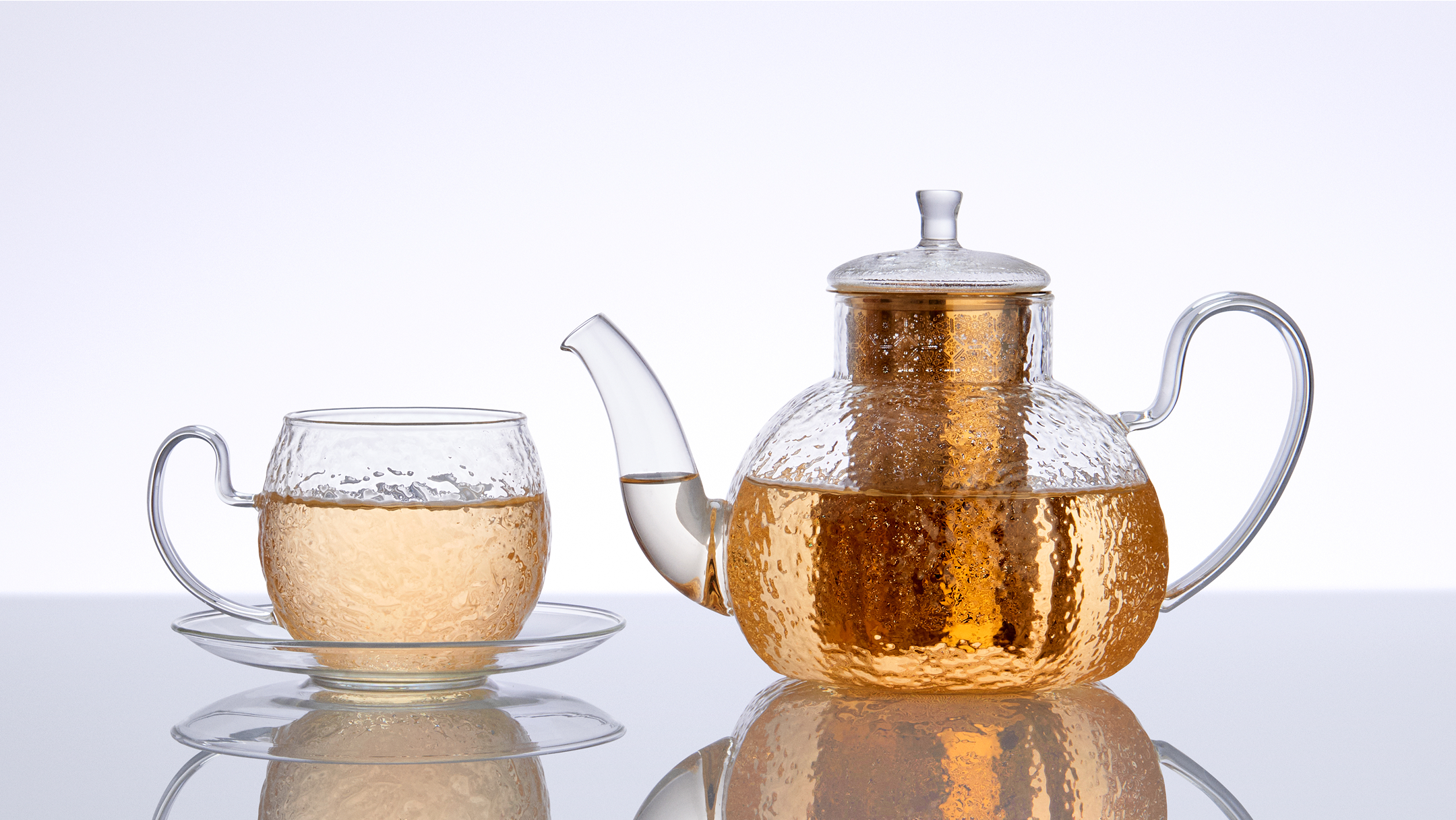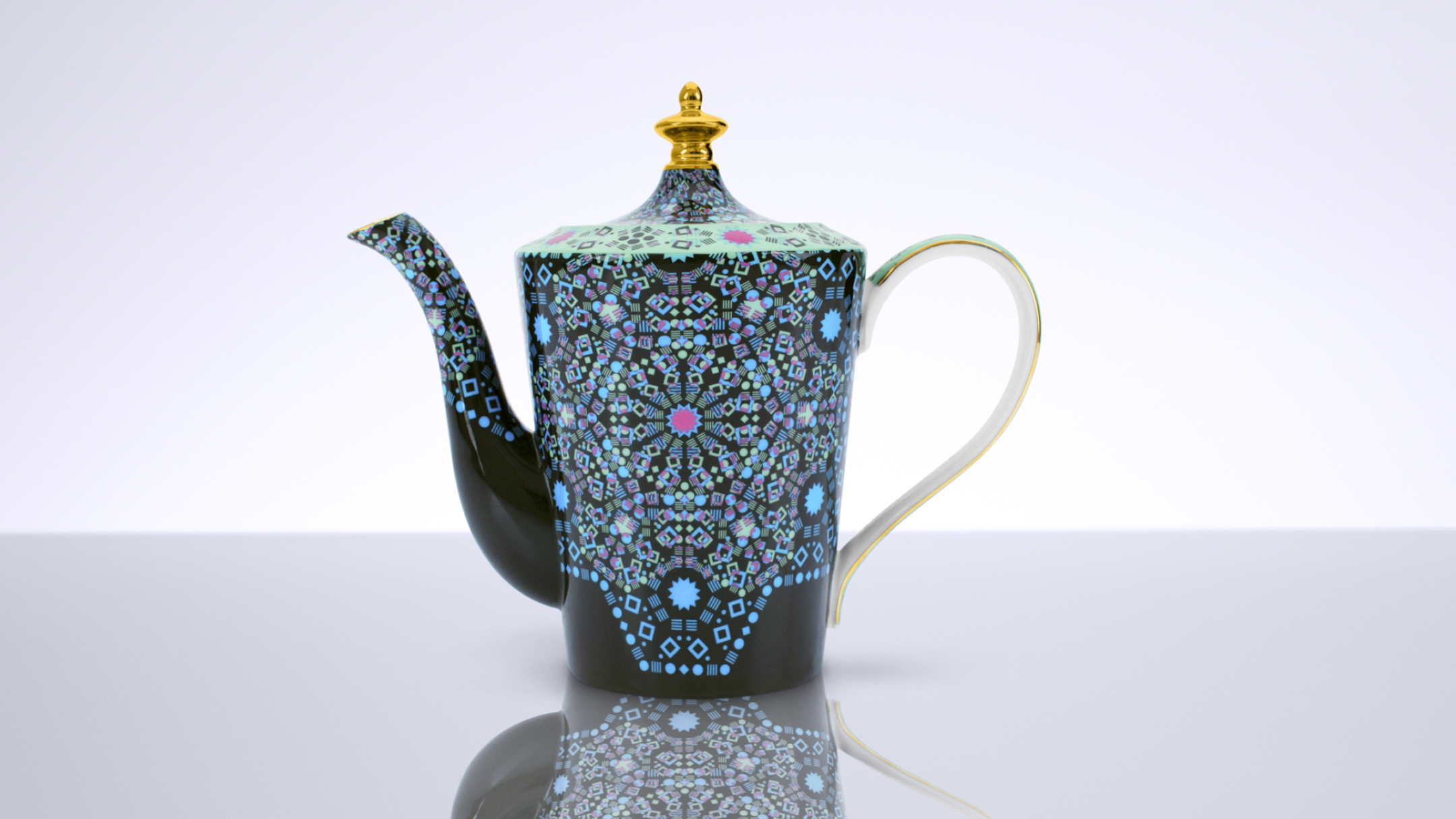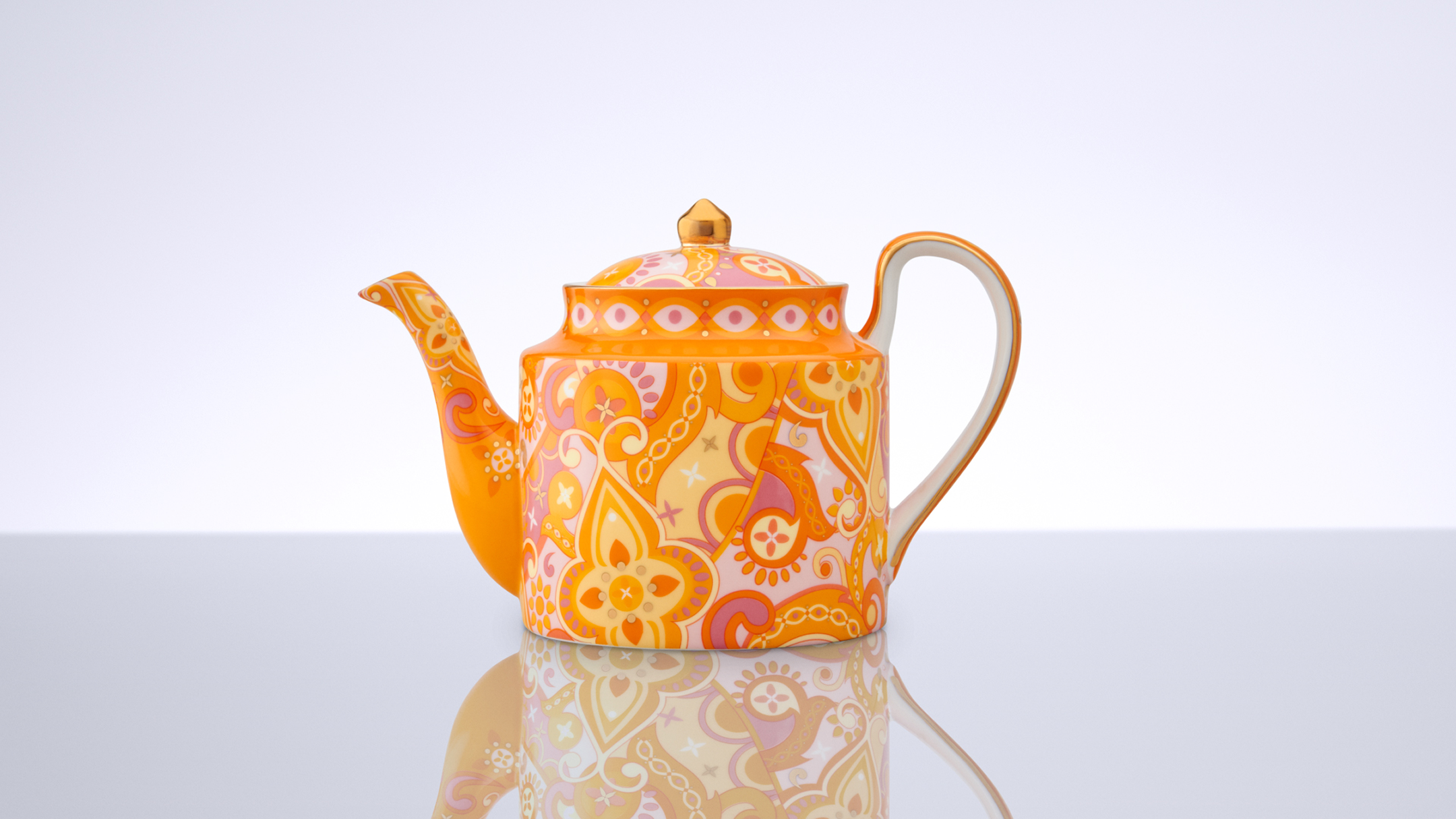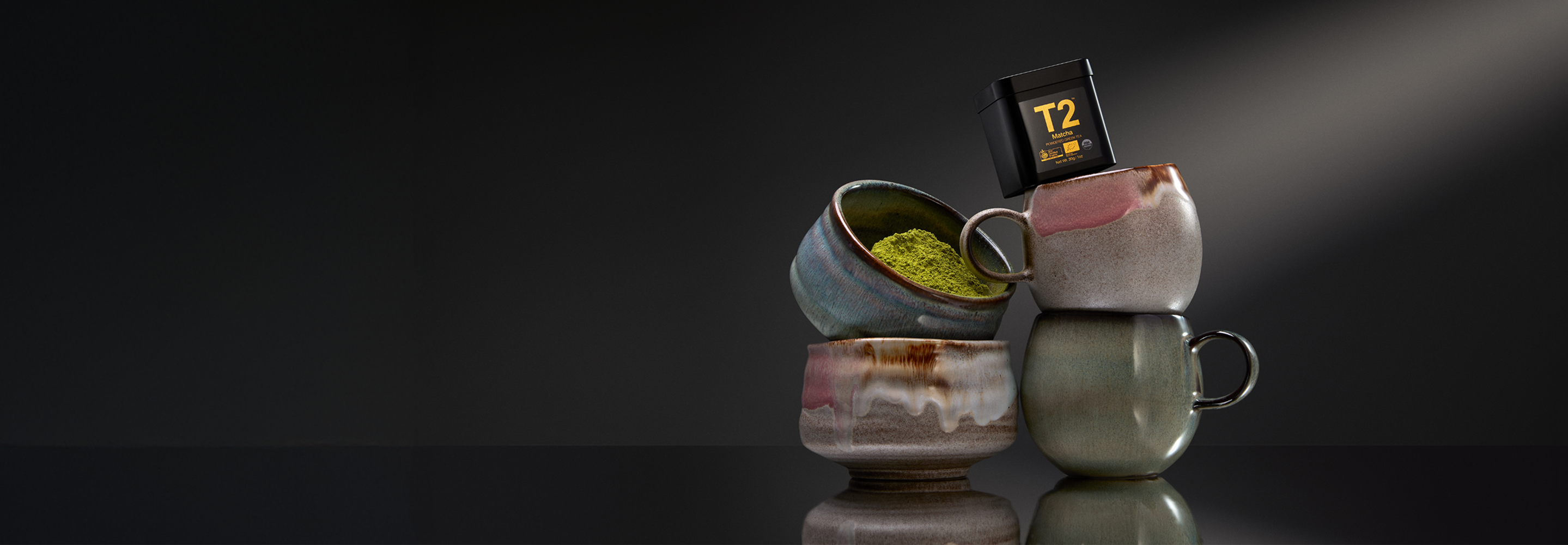Tea time is an art form, or at least that’s how we see it at T2. Like the guests sitting around the table, each piece of teaware has a story. From the teapot and milk jug to the cups and saucers – it’s a display of both functionality and beauty.
When choosing your teaware the most apparent decision is of aesthetics – which is all about personal style, so we’ll leave that to your good taste. But don’t overlook the materiality, which affects the durability and care required – as well as the drinking experience.
Read on for our guide to what the best materiality is for you, with extra advice from Mimi, the T2 Teawares Buyer and our resident trend setter.
Borosilicate glass
“While glass is a commonly used material, many don't understand the intricacies that go into making it – it’s an artform. At T2, each piece is handblown by mouth, a technique our suppliers have mastered over decades. This production process results in sophisticated yet simple design that is equally beautiful as it is functional.” - Mimi

Borosilicate glass was first made in the 1880s, when German scientist Otto Schott set out to create glass that could withstand the heat of scientific experiments. The result was a premium-grade glass with good thermal shock resistance—meaning it can handle temperature changes without cracking.
For tea drinkers and everyday use, that means glassware that’s as versatile as your brewing style. From the boiling hot water of a freshly brewed tea to the chill of an iced blend, borosilicate glass holds up.
At T2, our glassware style a perfect example of simplicity and function. The designs are clean and distinct – many of our pieces are hand-blown and detailed, making each is slightly unique like the Hammered Glass collection.
How to clean and care for borosilicate glass
Like any glass, it’s important to handle borosilicate glass with care. It is suitable for cleaning in the dishwasher. Just be sure to remove any infusers as they may not be suitable for the dishwasher. It is safe for use in the microwave, but steel infusers must be removed.
Glassware with painted details, such as the Bee Moroccan collection are not safe for the dishwasher or microwave – so always follow the directions specific for the item.
Fine bone china
“Fine bone china is the crème de la crème of teaware – it’s the most luxurious of materials. It’s both an heirloom piece that can kept for many years and passed down generations, but it’s also durable enough to be used daily. Stop saving your teawares for someday special, just like life, we think our teawares are a beautiful gift that deserves to be cherished every single day.” - Mimi

Fine bone china, as the name suggests, is made with animal bone ash, which gives it a strength that sets it apart from others. The bone ash gives it that tough yet delicate quality, it’s a brighter than porcelain which creates a perfect canvas for colour and patterns.
The fine, feather-light feel is what makes it truly special. And while it’s more resilient than it looks, keep in mind that you still need to handle it with care to keep it looking its best for years to come.
How to clean and care for fine bone china
Fine bone china is a fragile material so care should be taken.
Many of our fine bone china collection feature golden details, so we recommend giving these more delicate pieces a hand wash with a soft cloth. Avoid using a metal brush or sharp object as this can damage the gold.
To avoid tea stains, rinse and wash immediately after use. If stains occur from brewing tea, a deep clean using a gentle mix of vinegar and baking soda will do the trick.
Stoneware
“This is one of our more durable materials – which makes it ideal for someone who is just starting their teaware collection and wants something functional yet beautiful.” - Mimi

Craftsmanship emanates from stoneware, made famous for its rustic look and feel, but just as often can be smooth and polished. It is often heavier than other materials, and the colours are often earthy hues, coming from the clay base.
You will notice at T2, no two pieces of stoneware are exactly alike which comes from the handcrafted quality and bespoke approach. Our stoneware is crafted by using a combination of traditional and modern techniques, formed by both machines and by hand. Then each piece is manually cleaned and trimmed.
The coloured glaze is applied by either hand dipping the stoneware into a pot of glaze or hand painting. Intricate details such as tiny textural dots are individually and manually applied.
How to clean and care for stoneware
Just like clothing, if you take care of your ceramics but following a few simple steps– you’ll get to enjoy them for many teatimes.
Always follow the directions written specially for the item, but generally speaking solid colour stoneware with no metallic details, like the Glazed & Amazed collection, are suitable for the microwave and dishwasher. Although to increase the longevity of your item we would recommend a gentle hand wash and pat dry.
For stoneware with metallic details, we recommend a gentle hand wash and pat dry, the microwave or the dishwasher is not suitable and may cause damage to these beautiful works of art.
Porcelain

Porcelain has many similarities to fine bone china, but without the bone content and with an extra-hot firing process that makes it even denser and more durable. blend.
This high-temperature treatment gives porcelain its signature toughness, making it a go-to for teaware but you’ll also see it in baking dishes and tableware—anywhere strength and longevity are priority. In our collection, it’s the perfect everyday companion, whether you're starting the morning with breakfast tea or winding down at night with an herbal
How to clean and care for porcelain
Similarly to fine bone china, porcelain is fragile, so always take care when washing for longevity. Most porcelain is dishwasher and microwave safe. However, our designs that feature gold details are not made for use in the dishwasher and microwave.




















